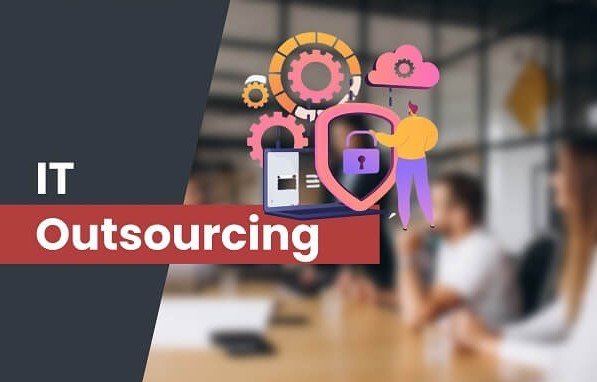Whether you’re building a product from scratch or expanding your existing project, having the right team is crucial. This means working with highly skilled professionals who bring technical expertise and innovation.
However, if your in-house team lacks the required expertise, outsourcing your IT services can be a game-changer. A reliable outsourcing partner can provide:
- Staff augmentation to enhance your in-house team.
- Dedicated software development teams to bring your vision to life.
With the rising demand for IT outsourcing, countless firms have emerged with impressive websites and marketing campaigns. However, not all vendors live up to their promises. Selecting the right partner requires a well-structured approach.
To enable you to choose the right partner when Outsourcing your IT services, here is a 7-step framework to help you identify the best IT outsourcing vendor for your business.
7 Steps to Choosing the Right IT Outsourcing Vendor
Before you embark on the selection process, it’s recommended that you create a checklist for evaluating potential IT partners. This checklist should include critical criteria such as expertise, scalability, communication, and security measures.
1. Analyze Your Business Requirements
Before reaching out to outsourcing vendors, organizations should clearly define their:
✅ Goals – What business challenges do you aim to solve?
✅ Technical Needs – Do you require a full development team or partial support for an existing project?
✅ Tech Stack – Ensuring alignment with your current technologies can streamline development.
✅ Timelines – Setting clear deadlines helps maintain project efficiency and meet market demands.
Since no outsourcing partner will know your business as well as you do, be precise about your expectations to achieve the best results.
2. Request Client References, Case Studies, and Testimonials
In IT outsourcing, not all vendors deliver on their promises. To verify their credibility:
- Check B2B review platforms like Clutch and GoodFirms for ratings and feedback.
- Request case studies detailing challenges, solutions, and results from similar projects.
- Ask for client references and speak directly with previous customers to gain insights into their experiences.
3. Evaluate Vendor Availability, Flexibility, and Management System
If you’re considering IT outsourcing, chances are your internal workload is already high. Ensuring your outsourcing partner is available when needed is crucial for project success.
✅ Check for scalability – Can they quickly ramp up resources based on your needs?
✅ Assess timezone compatibility – Do their working hours overlap with yours for smooth collaboration?
✅ Determine flexibility – Are they willing to adapt to your internal processes rather than forcing you to fit theirs?
Choosing a flexible and responsive vendor ensures efficiency and minimizes workflow disruptions.
4. Eliminate Communication Barriers
Clear communication is essential for successful outsourcing. Your chosen vendor should:
✅ Be fluent in your language (or English, the global business language).
✅ Be responsive via email, phone, or messaging platforms for real-time issue resolution.
According to Statista (2021), 86% of Vietnam’s population speaks English as a second language, making the country a prime destination for IT outsourcing. Selecting a vendor with strong English proficiency ensures seamless collaboration.
What’s Next?
These are the first four steps in choosing the right IT outsourcing partner. Want to ensure project security, cost efficiency, and long-term success? Stay tuned for the next steps!
5. Assess Vendor Infrastructure and Technology Capabilities
A well-equipped IT infrastructure is essential for meeting your business needs efficiently. A reliable outsourcing partner should have:
✅ Up-to-date hardware and software – Ensuring optimal performance and security.
✅ Robust network infrastructure – Stable internet connectivity and communication tools.
✅ Integration with your tech ecosystem – Seamless compatibility with your existing systems.
In addition, the vendor should be capable of implementing methodologies that align with your business model. Many modern IT service providers adopt the Scaled Agile Framework (SAFe) to:
Improve productivity
Accelerate development cycles
Enhance product quality
A vendor with a strong technical foundation and a flexible development approach ensures long-term success and adaptability to evolving market demands.
6. Gauge the Financial Stability of the Vendor
Partnering with a financially unstable outsourcing vendor poses serious risks, such as project delays, sudden service disruptions, or bankruptcy. To safeguard your investment:
Research the vendor’s financial history – Check their annual reports, funding sources, and revenue stability.
Investigate leadership credentials – Analyze the background, experience, and track record of key executives.
Look for industry recognition – Certifications, awards, and partnerships can indicate a company’s reliability.
A financially sound outsourcing partner ensures continuity, reliability, and long-term collaboration.
7. Schedule Demos and Conduct Vendor Interviews
By this stage, you’ve narrowed down your options. Now, it’s time to validate their capabilities through live demos and interviews.
Why schedule demos?
- Test the functionality and scalability of their proposed solutions.
- Assess how well their technology integrates with your existing systems.
- Identify any inconsistencies before finalizing the partnership.
Key questions to ask during interviews:
✅ Does the proposed solution meet end-user needs?
✅ Is the team experienced with the required technology?
✅ Were any inconsistencies or limitations observed during the demo?
Choosing an IT outsourcing partner is a strategic decision that requires careful evaluation. Taking the time to test, analyze, and communicate with potential vendors will help you find the best match for your business goals.
Final Thoughts: Making the Right Outsourcing Decision
Selecting the right IT outsourcing vendor involves meticulous research, structured evaluation, and hands-on testing. By following this 7-step framework, you can confidently partner with a vendor that aligns with your:
Technical requirements
Business goals
Budget constraints
Long-term vision
A trusted outsourcing partner is more than just a service provider—they become an extension of your team, driving innovation and scalability.
